| |
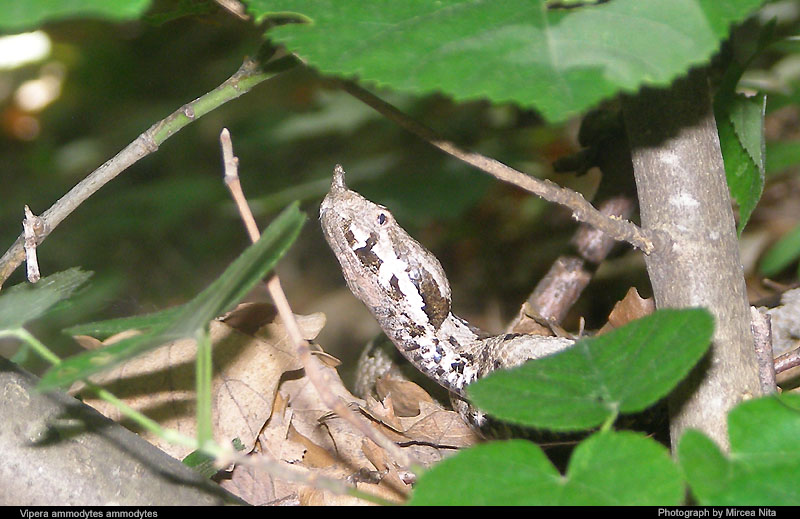
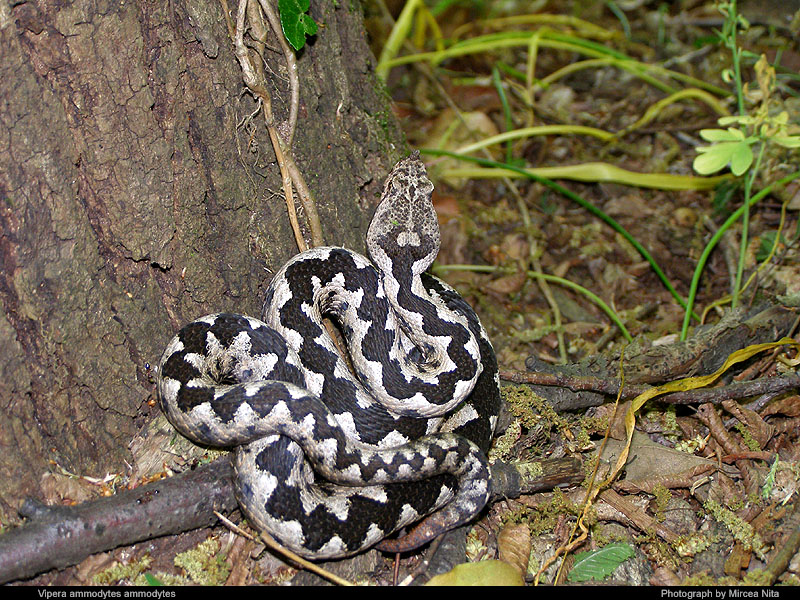
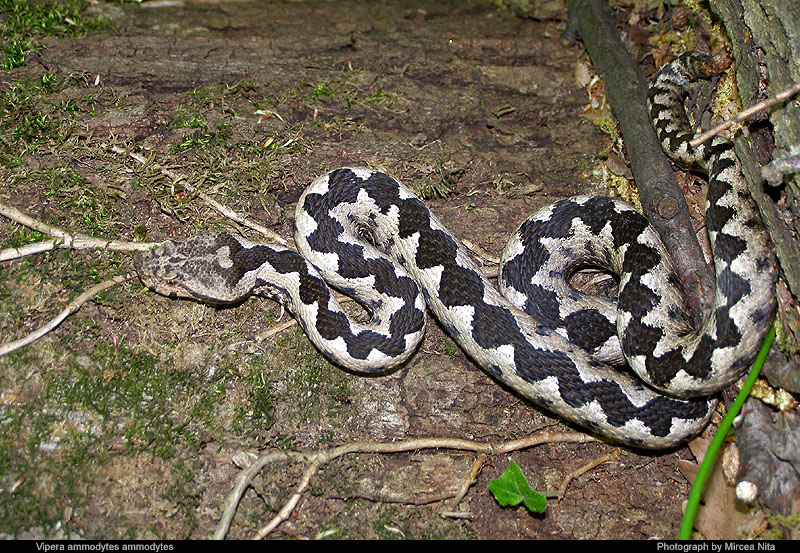
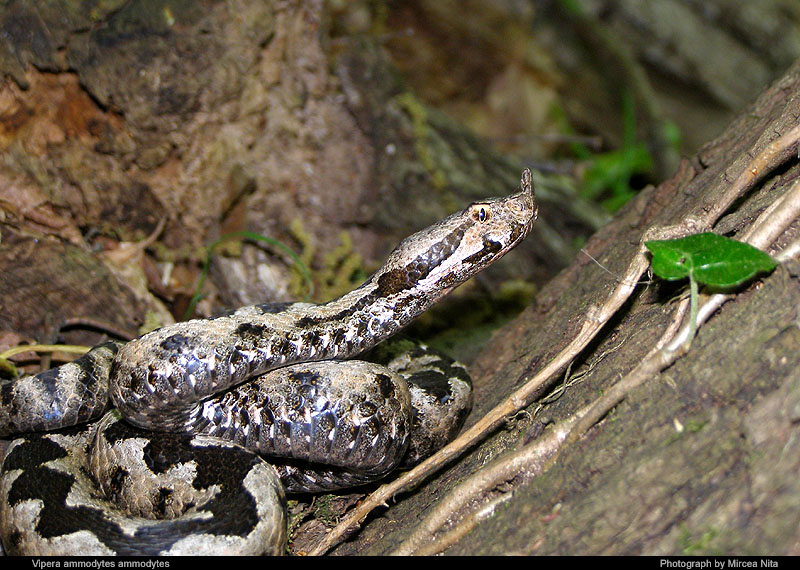
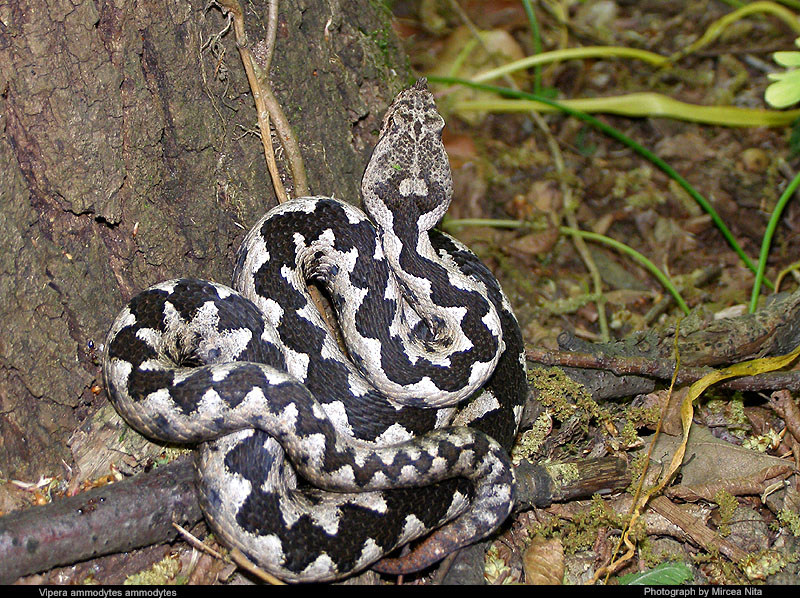
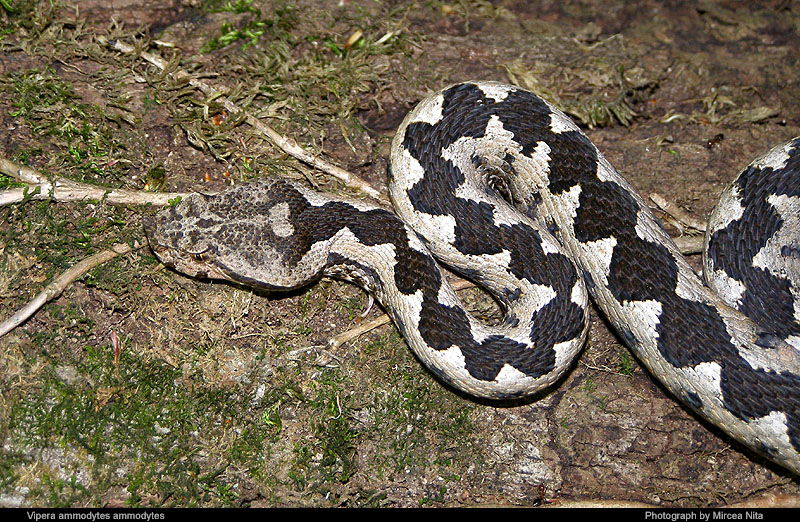
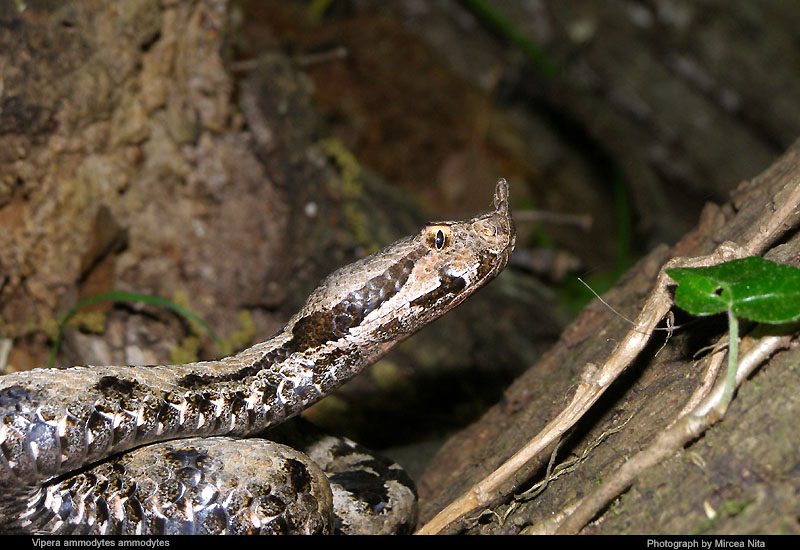
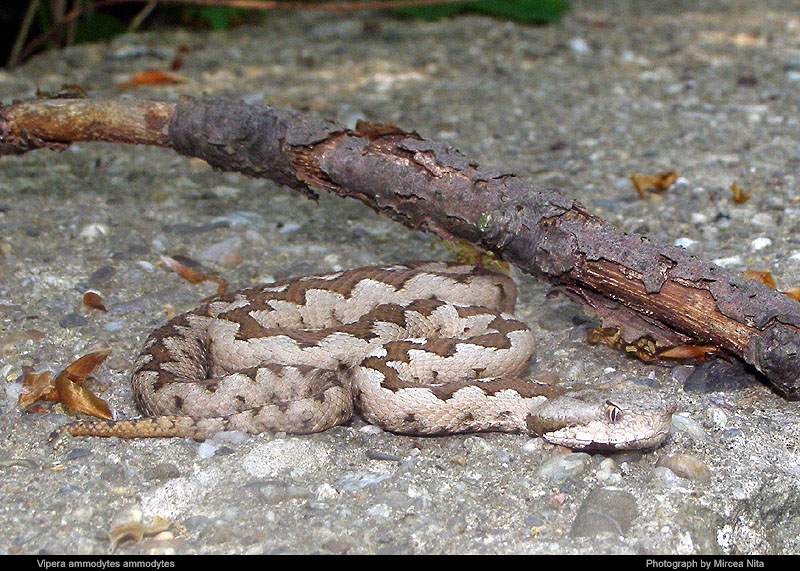
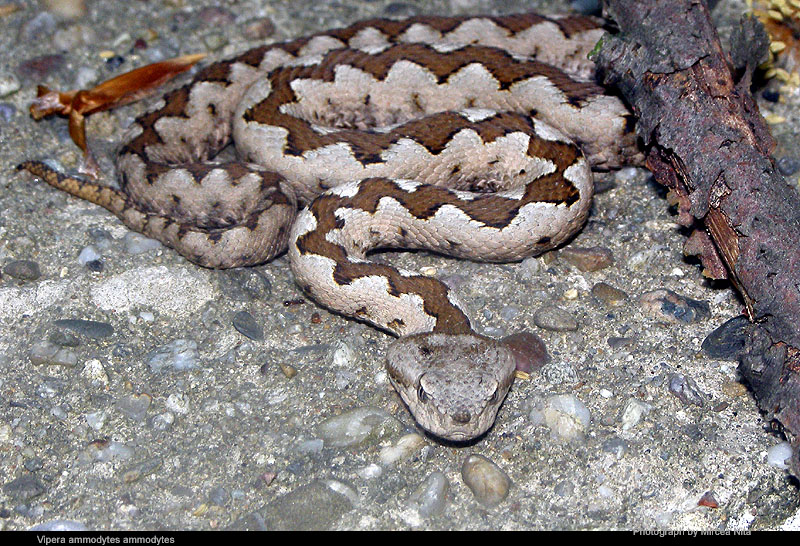
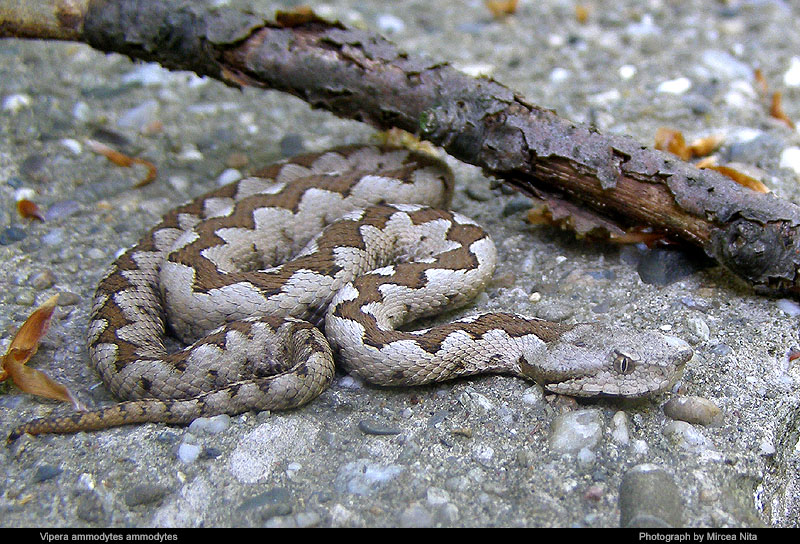
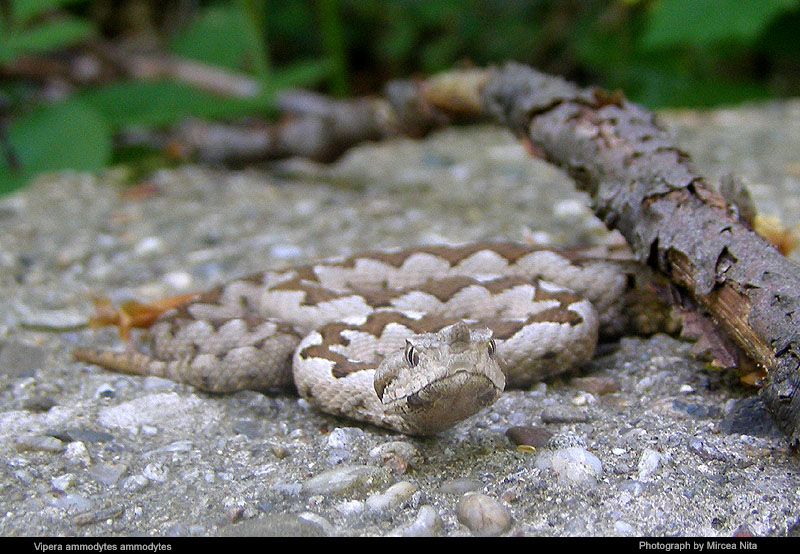
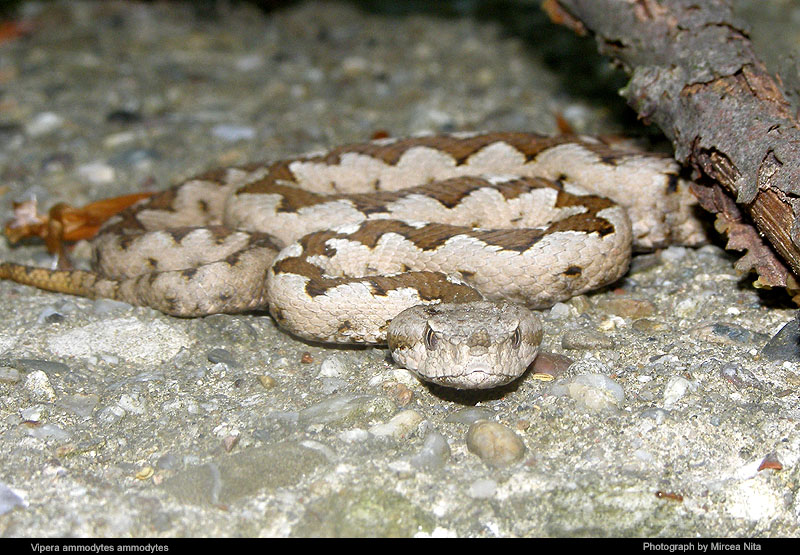
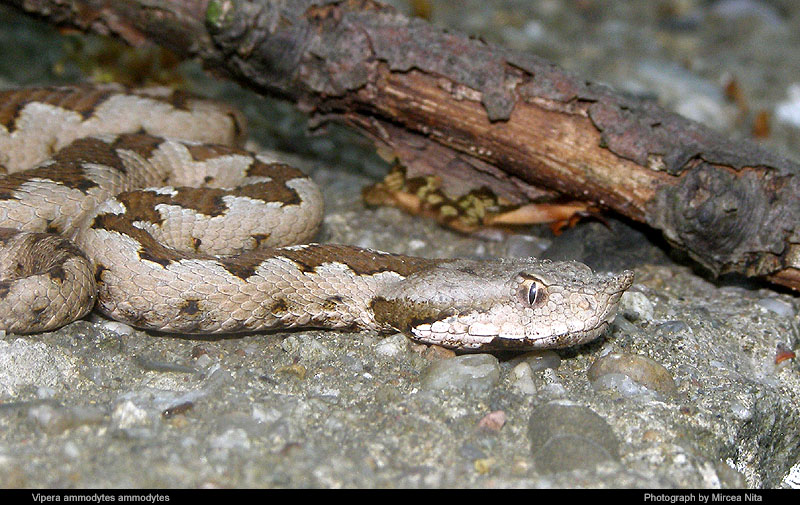
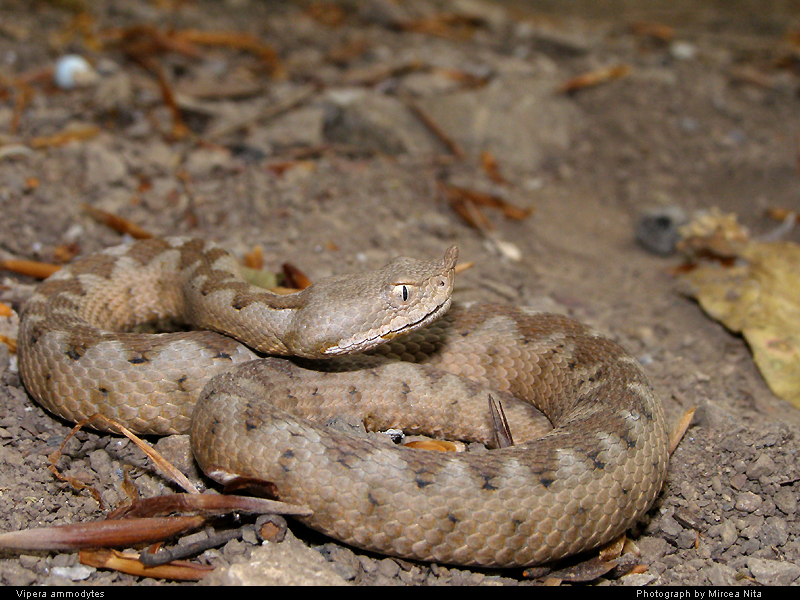
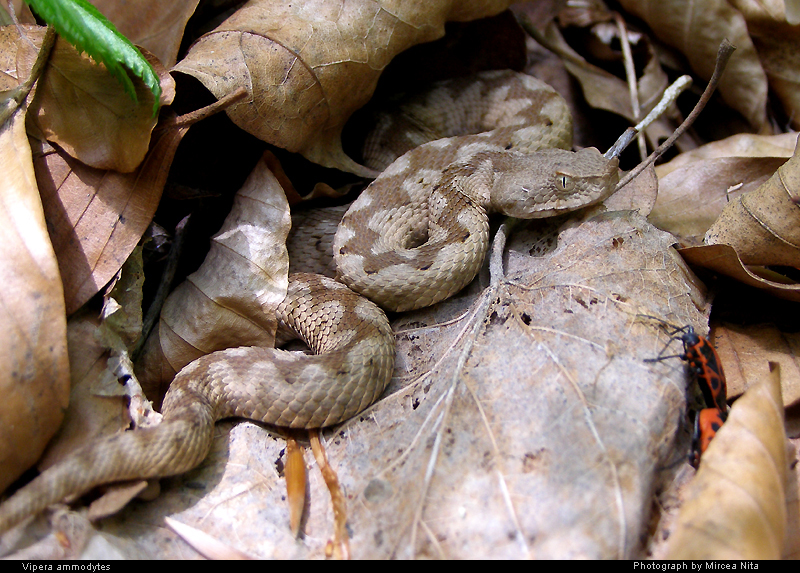
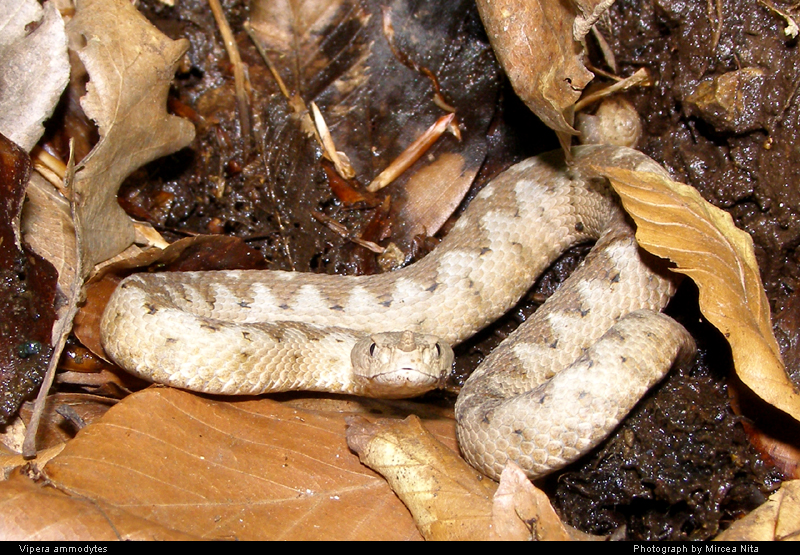
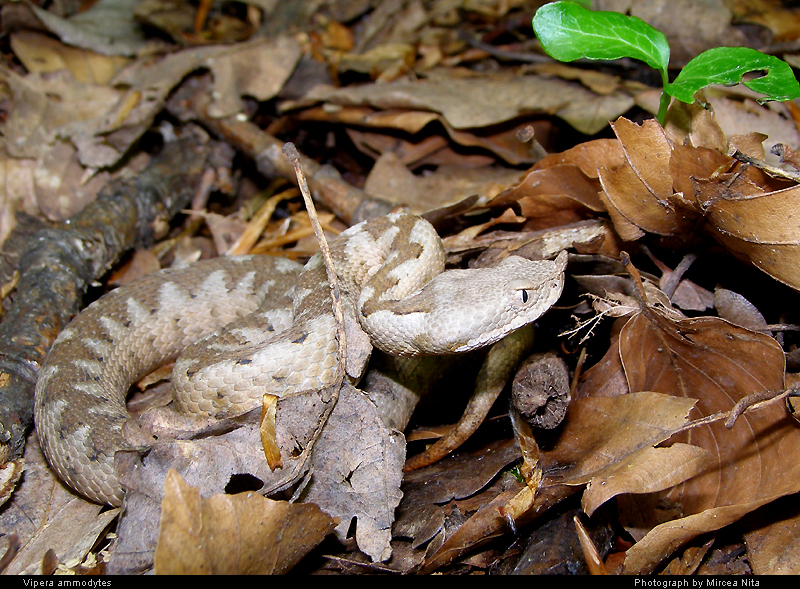
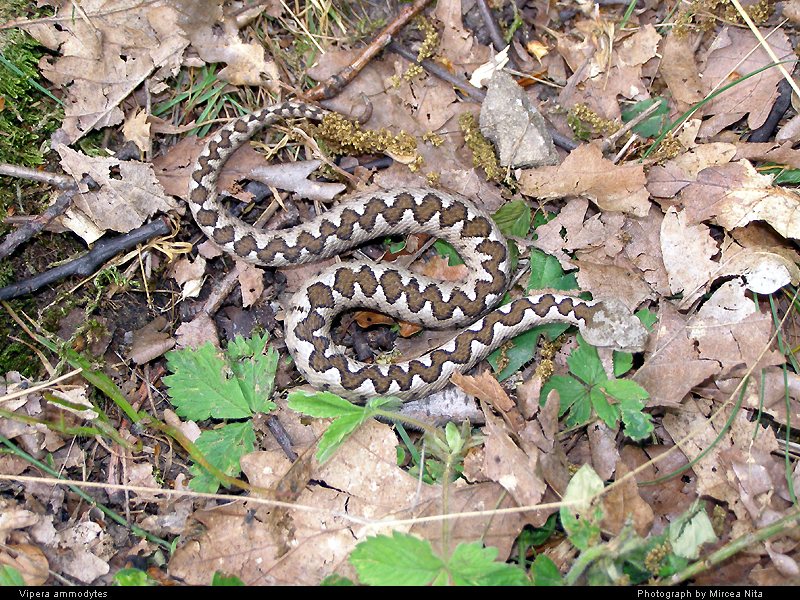
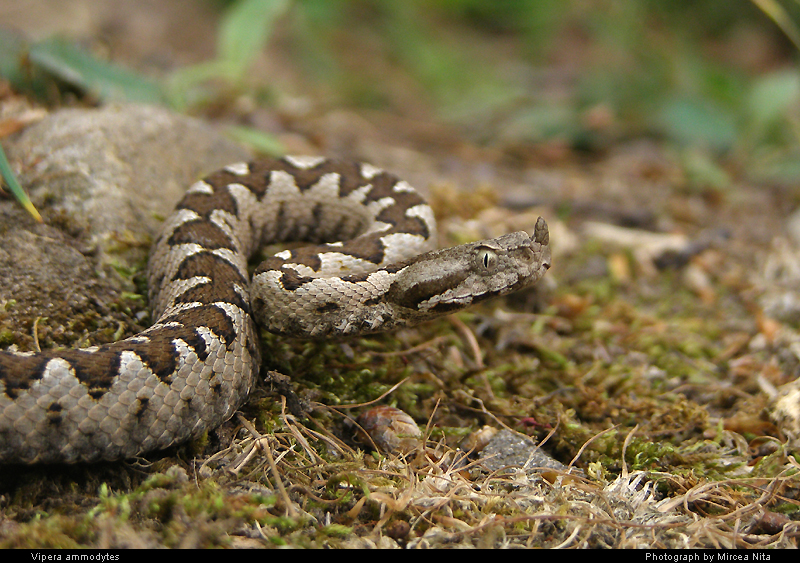
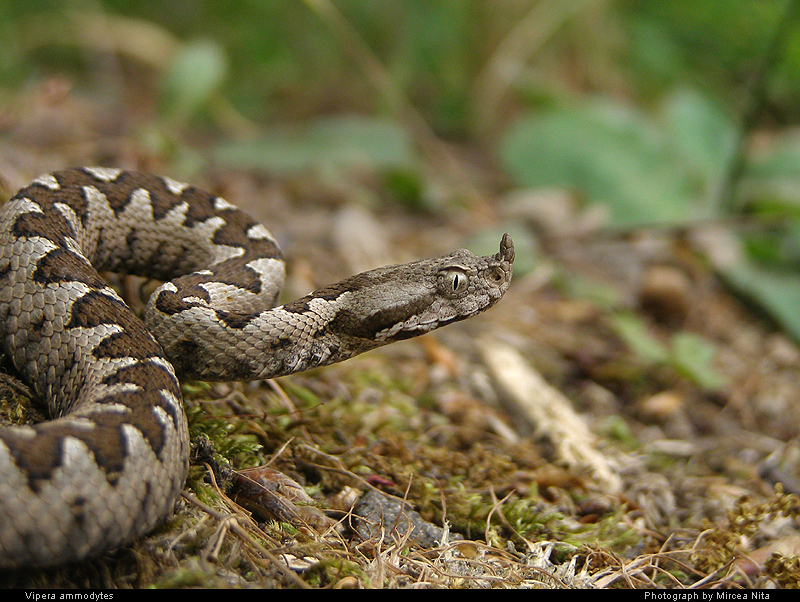
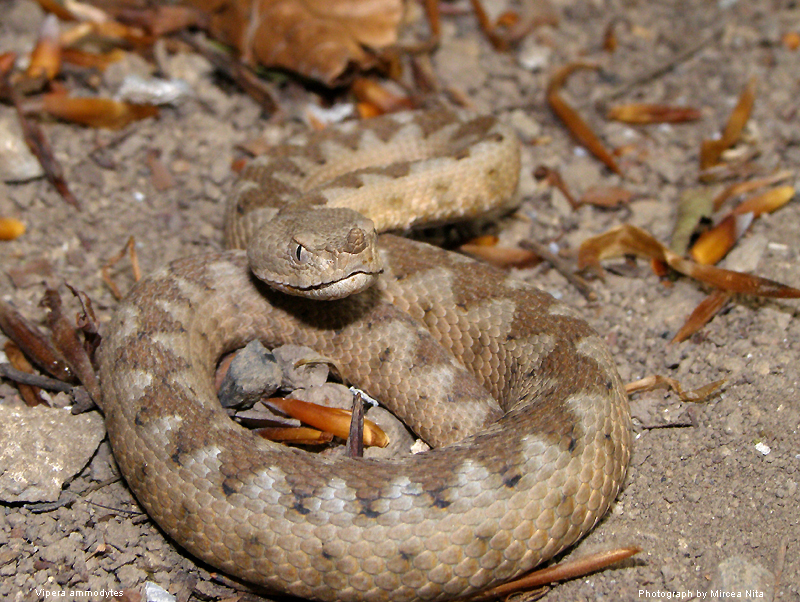
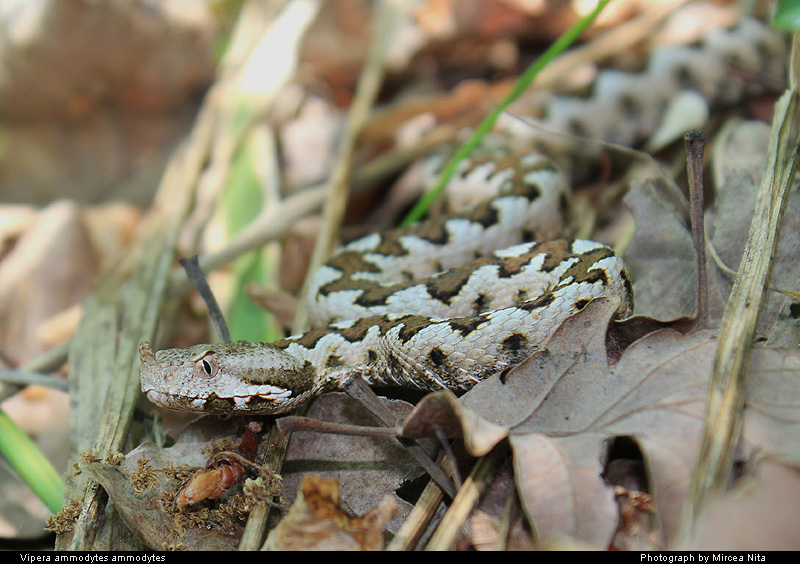
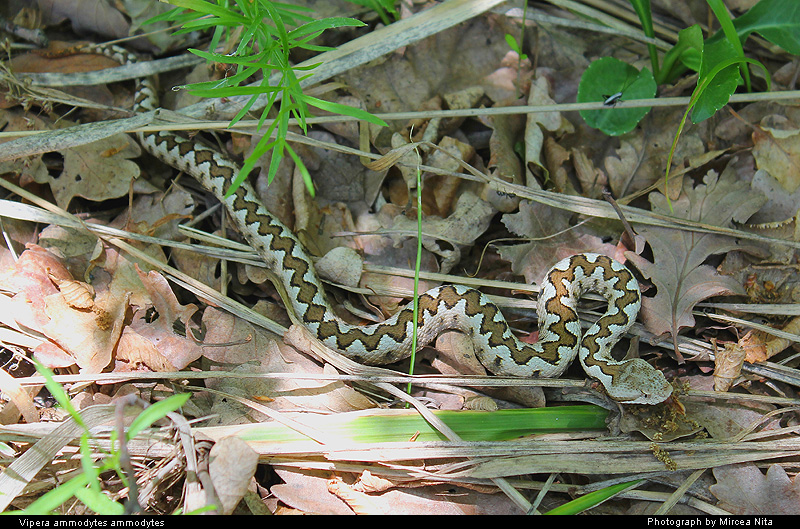
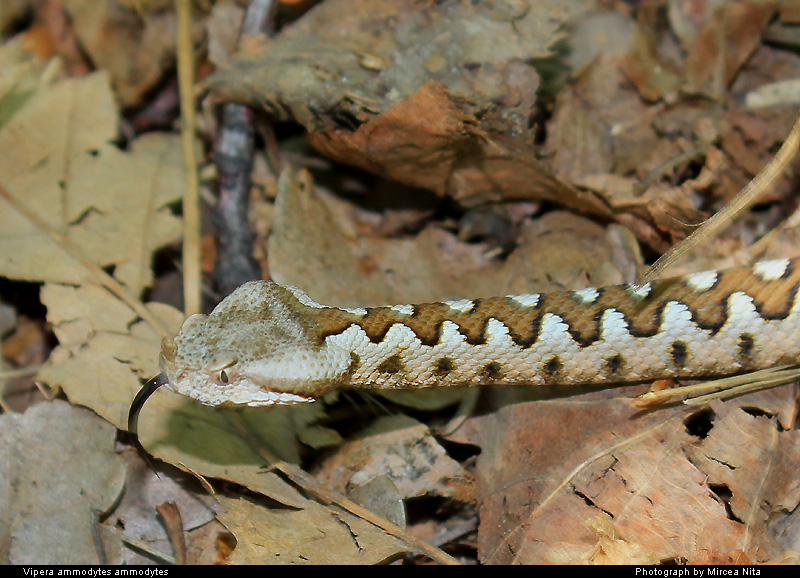
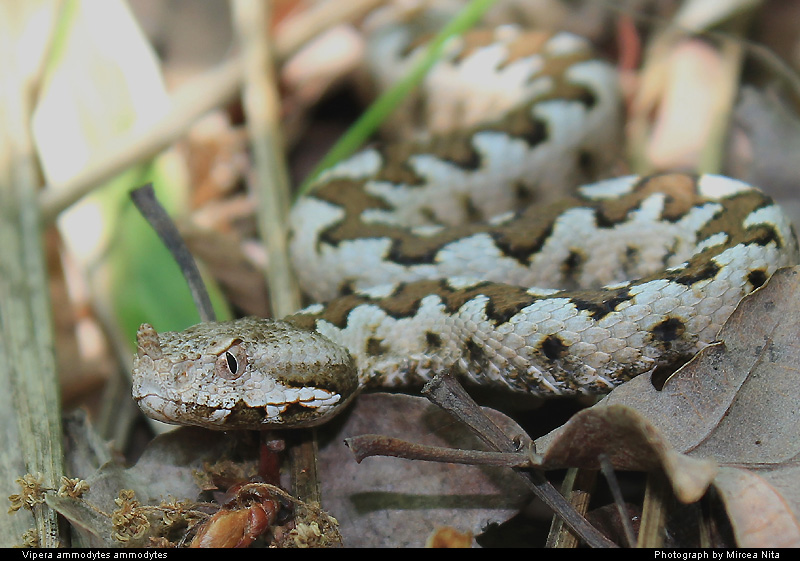
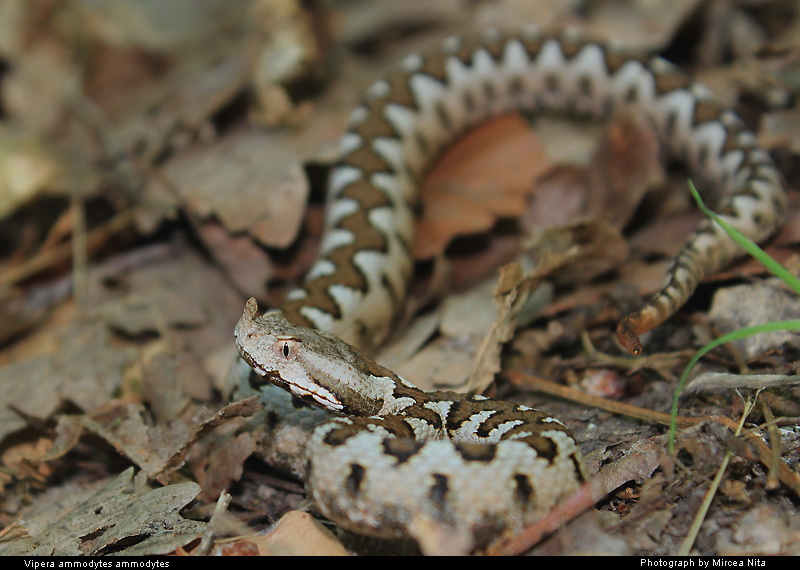
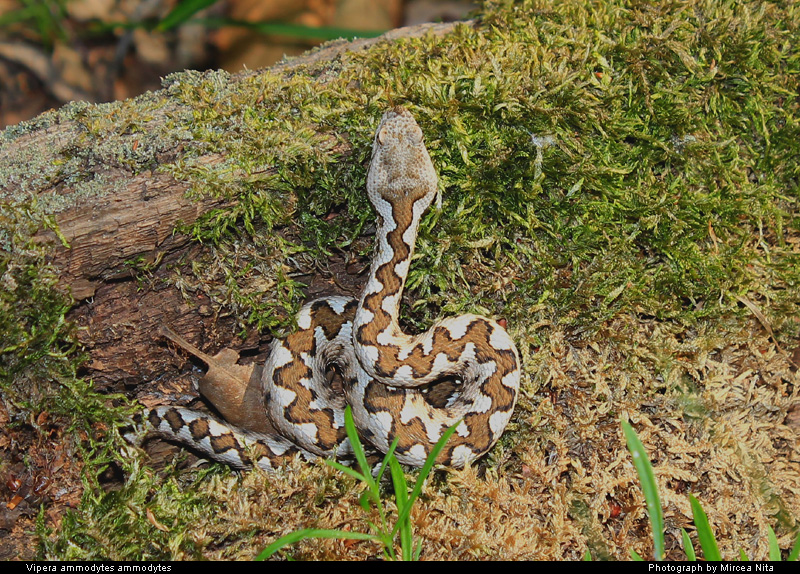
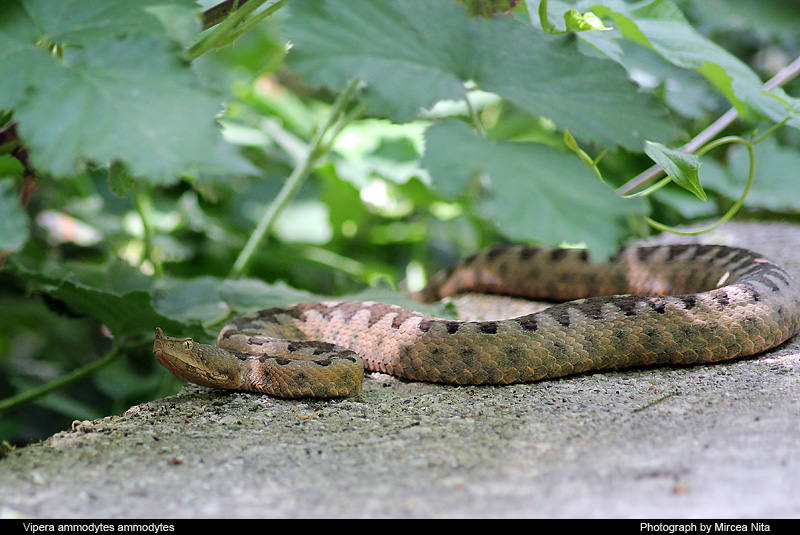
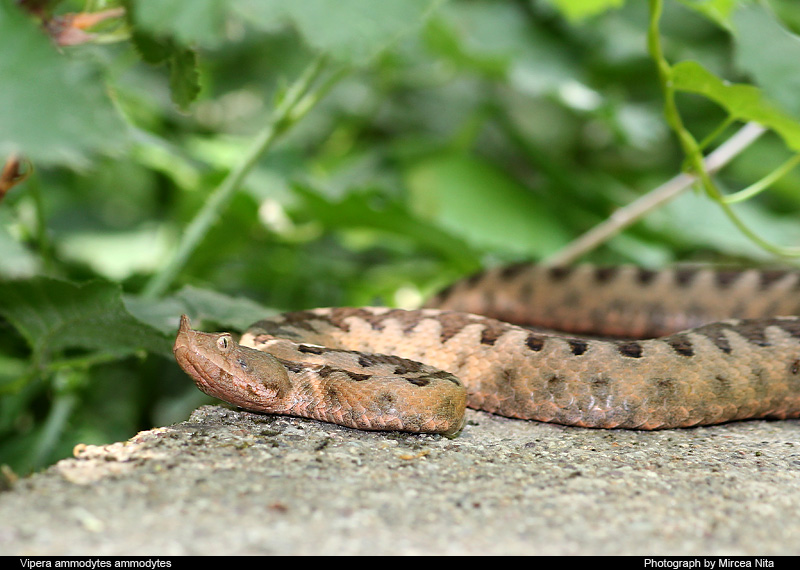
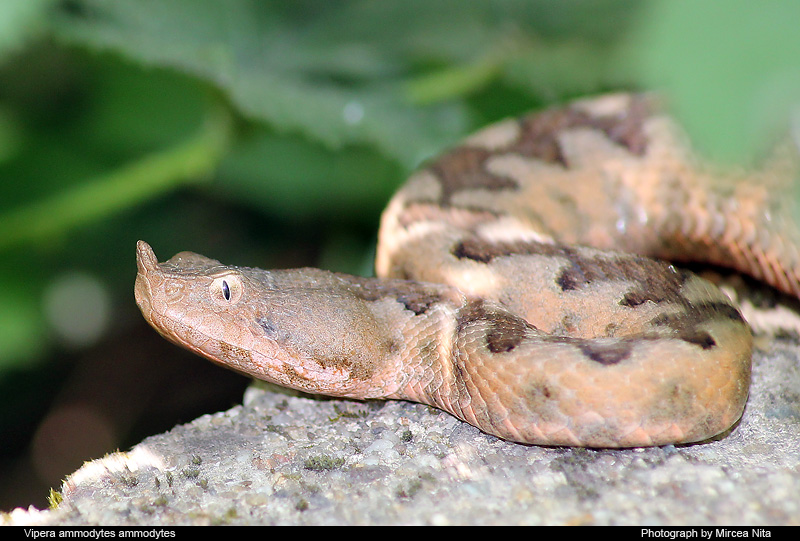
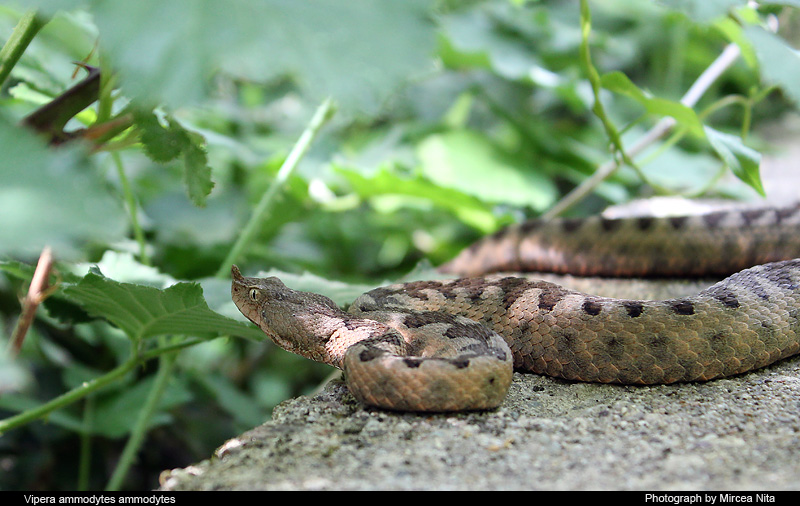
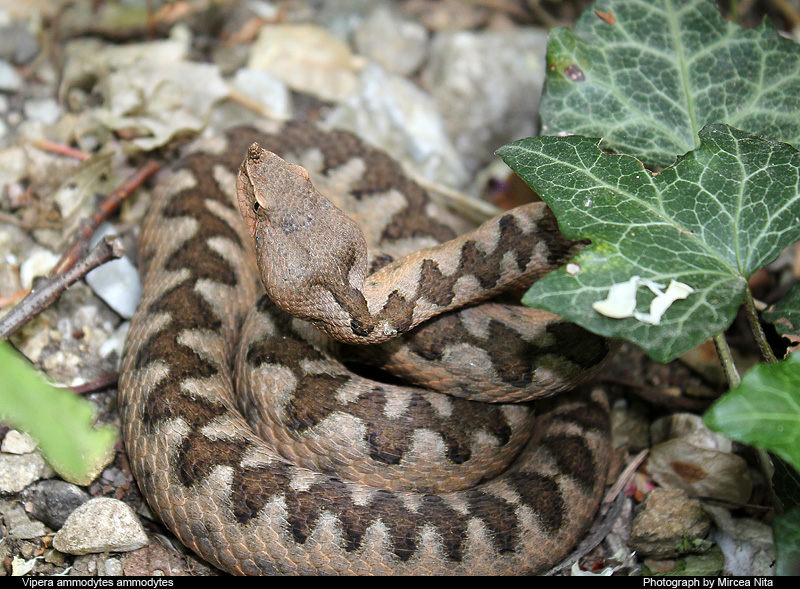
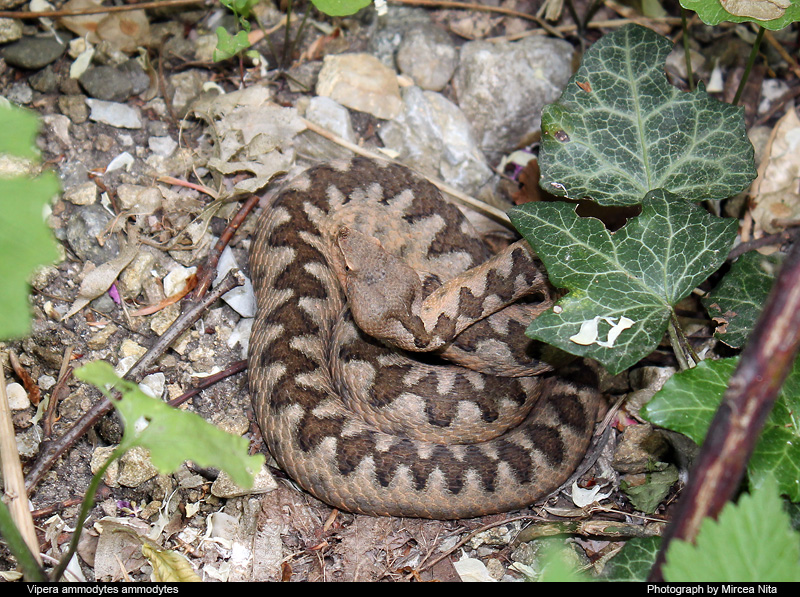
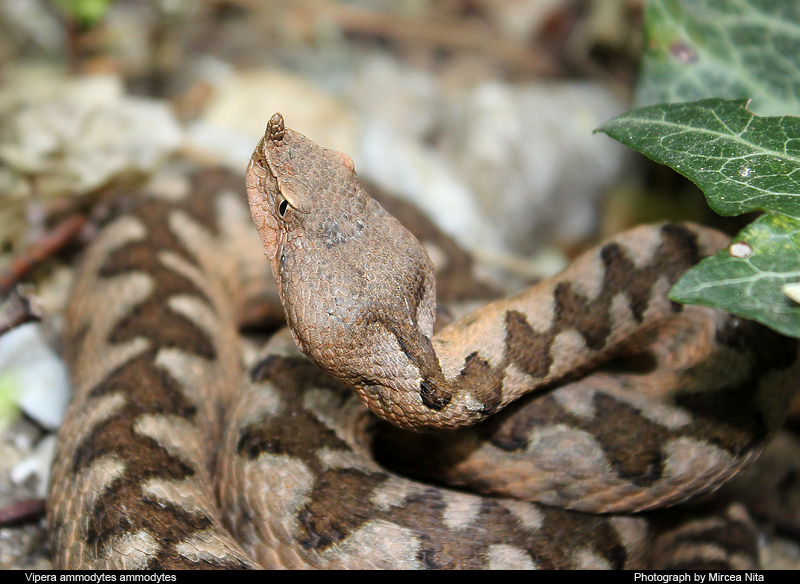
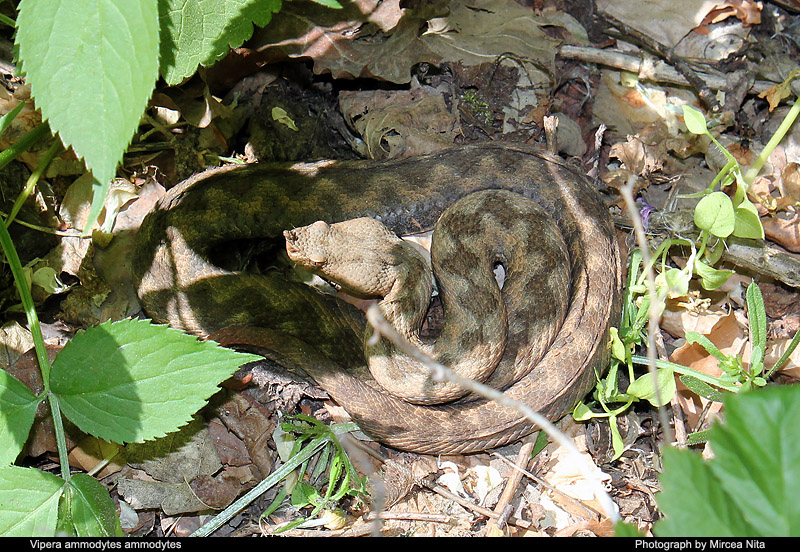
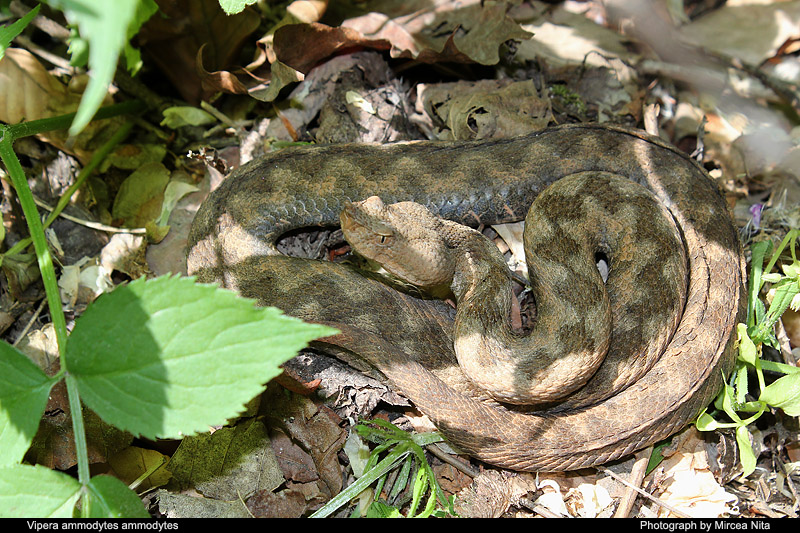
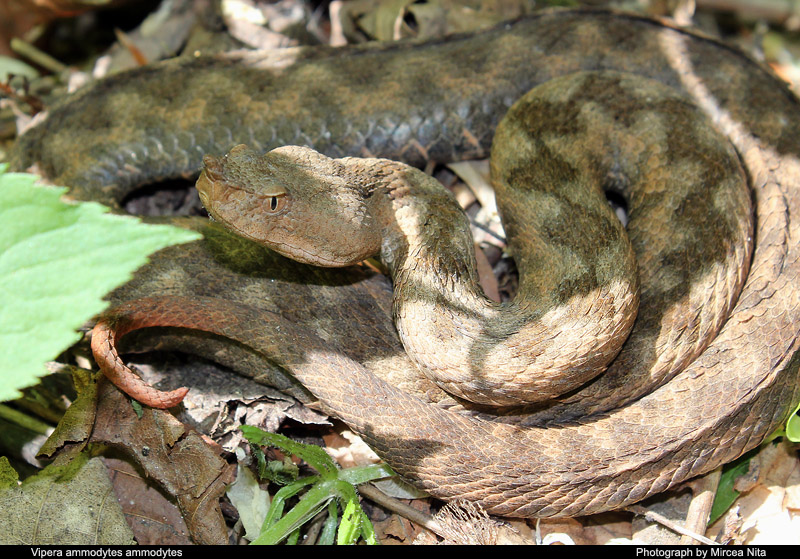

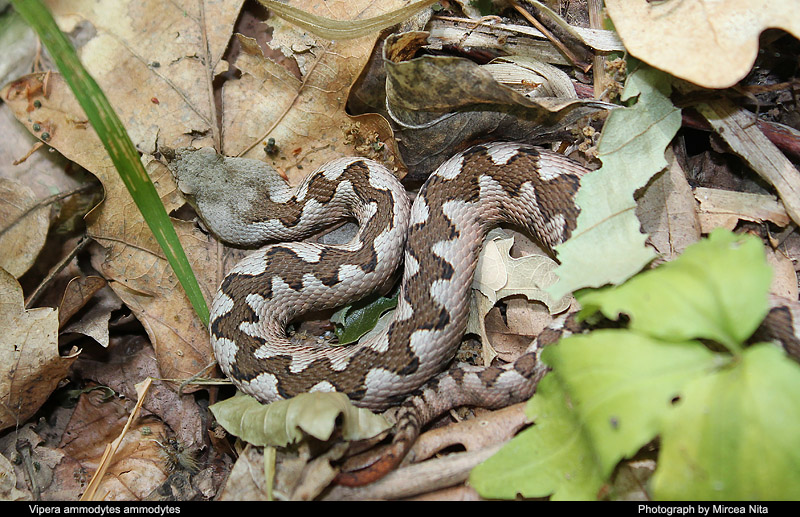
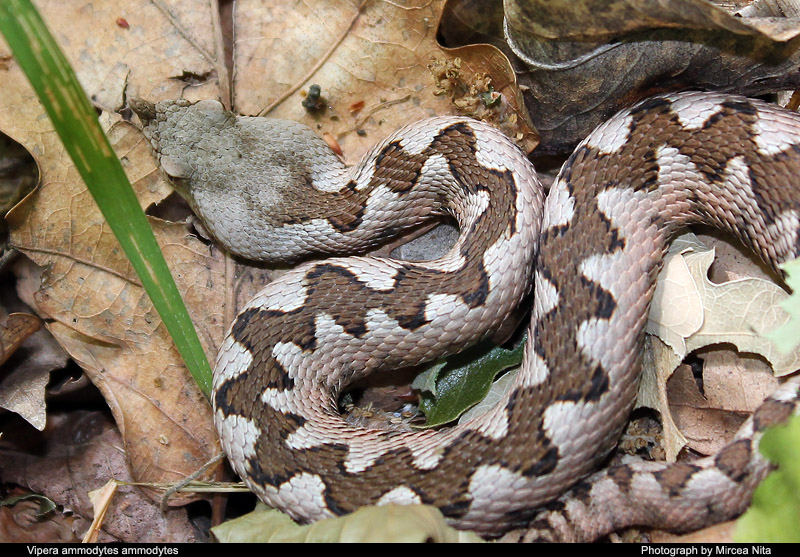
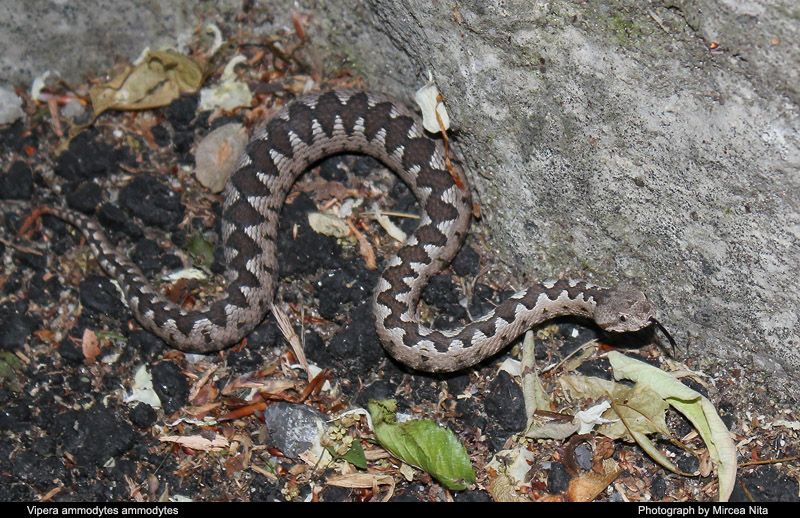
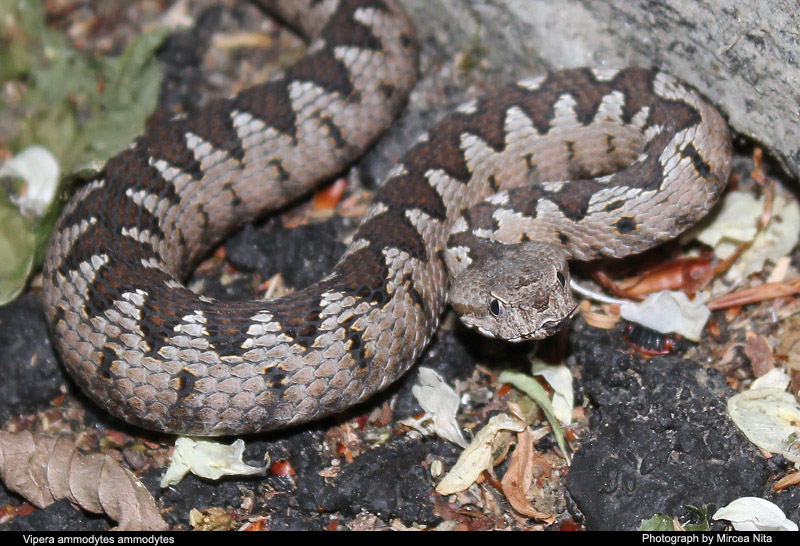
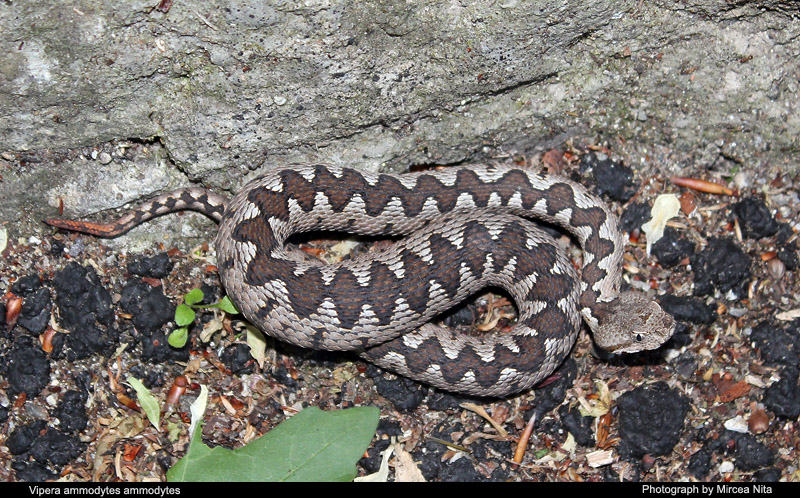
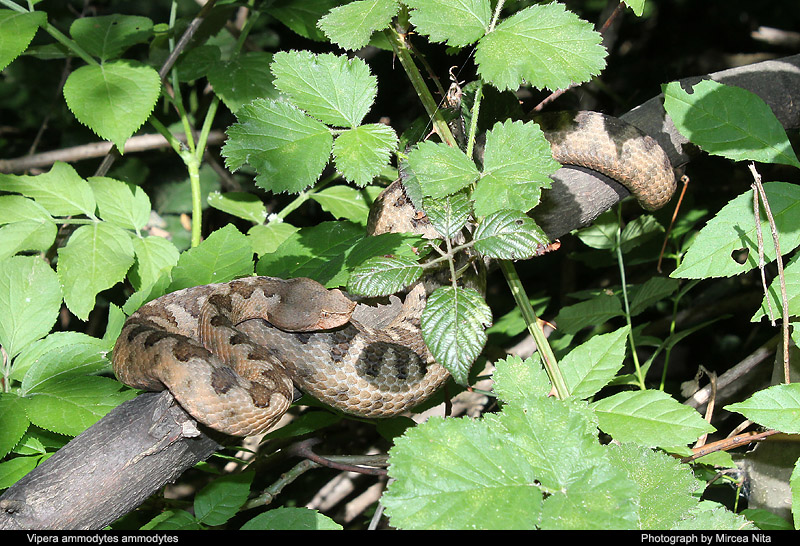
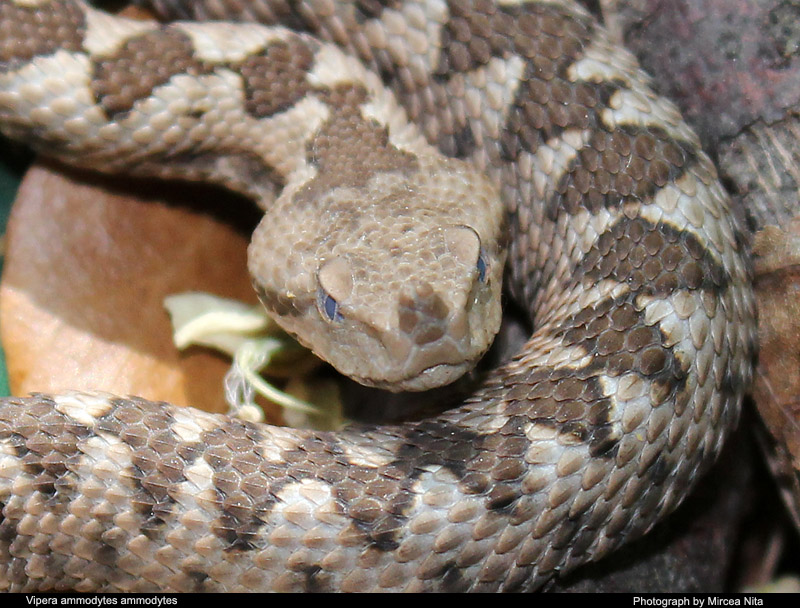
Vipera ammodytes - Linnaeus, 1758
Description
Vipera ammodytes is the most venomous snake in Europe and its most distinctive characteristic is a "horn" on the snout, covered with 9-17 scales.
Form: short and heavy. Adults usually are between 60 and 80 cm and can reach 100 cm; females are more heavily built, although the largest specimens on record are males.
The rostral is usually broader than deep; naso-rostral (rarely divided into two) usually reaching the canthus rostralis, and extending considerably higher up than the upper border of the rostral. Upper surface of head is covered with small smooth or faintly keeled, subimbricate scales, among which a feebly enlarged frontal shield or a frontal and a pair of parietals are rarely distinguishable; when present, the frontal is separated from the supraocular by two series of scales ; on the vertex five to eight series of scales separate the supraoculars. Supraocular has a very convex outer border, usually not extending posteriorly beyond the vertical of the eye. Ten to thirteen scales round the eye; one or two vertical series of scales separate the preoculars from the nasal, which is single or rarely divided, and hollowed out. There are two series of scales between the eye and the labials. The upper labials are eight to twelve in number, usually nine or ten. The scales are in twenty-one or twenty-three (rarely twenty-five) rows, with two apical pits, strongly keeled, those of the outer row being smooth or feebly keeled. It has a single anal scale. There are 133 to 161 ventral shields in males and 135 to 164 in females; subcaudals: 27 to 46 in males, 24 to 38 in females.
Males are grayish or pinkish gray or yellowish brown with a black or dark brown line that forms a zigzag pattern running the length of its back. A dark stripe is usually found behind each eye. Also males have a characteristic dark blotch or V marking on the back of the head that often connects to the dorsal zigzag pattern.
The color pattern for females is similar but it is less distinct and contrasting. They usually don't have the V marking on the head as males. The ground color is brownish, reddish brown, brick red, grayish brown and the dorsal zigzag pattern is a shade of brown.
The belly can be grayish, pinkish, yellowish brown, darkly spotted. The tip of the tail is red, orange, pink, yellowish, green.
Back scales are keeled. Entirely black individuals (melanism) are very rare.
Other subspecies than typical form described first:
Var. montandoni (found in Bulgaria, south-east Romania): Naso-rostral shield never reach the canthus rostralis nor the summit of the rostral shield, which is deeper than broad (once and one-seventh to once and a half); rostral appendage clad with ten to fourteen scales, in three (rarely two or four) transverse series between the rostral shield and the apex. Lower surface of end of tail is yellow.
Var. meridionalis(found in Greece (incl. Corfu and other islands, Turkish Thrace): Naso-rostral shield never reach the canthus rostralis, and but rarely extending higher up than the upper border of the rostral, which is often as deep as broad or a little deeper than broad; rostral appendage clad with fourteen to twenty scales, in four or five (rarely three) transverse series between the rostral shield and the apex. Supraciliary edge is usually more prominent than in the typical form, sometimes slightly angular.
Var. transcaucasiana(found in Georgia, north Turkish Anatolia) is similar with the var. montandoni in the rostral scutellation and in the number of ventral shields (150 to 156), but differing in the markings on the back; these consist of dark bars or alternating paired dark spots. The dark and light markings on the lower lip are as in the typical V. ammodytes, and the lower surface of the tail is pale yellow or greenish towards the end.
Biology:
Mating takes place in the spring, on the end of April and in May. Females give birth to four to twenty live young (15-23 cm in length) in August - October. This species is ovoviviparous.
It feeds on mice, lizards, nesting birds and their young and occasionally other snakes.
In spring and autumn is active by day, in summer is more active during dusk and night. In the cooler regions of the mountains, which it ascends to a considerable altitude (may be found above 2000 m at lower latitudes), it is essentially diurnal, leaving its retreat only when the sun shines.
The length of its period of hibernation depends entirely on the climate and is between 2 to 6 months.
Relatively slow (but fast if needed), this species is not at all aggressive and rarely bites without considerable provocation. When surprised stays perfectly still or hisses loudly and/or run. It has often been found climbing low- bushes and trees in search of nesting birds or sunning.
Its venom has protheolytic and neurotoxic components and contains hemotoxins, being one of the most dangerous snakes to be found in Europe.
Habitat:
This species shows a predilection for dry sunny habitats with low vegetation and rocks (rock-piles, dry stone walls). Avoiding thick forest, it occurs on the edges of woods and in clearings, as well as on the borders of roads through woods and meadows with dense low-bushes.
Distribution:
Austria (Styria, Carinthia), northern Italy, Slovenia, Croatia, Bosnia-Herzegovina, Serbia, Montenegro, south-west of Romania, north-west of Bulgaria, Macedonia, northern Albania.
Scientific name: Vipera ammodytes
Common name: Horned viper, long-nosed adder, nose-horned viper.
IUCN status: listed as Least Concern in view of its wide distribution and presumed large population.
This species is listed on Annex II of the Bern Convention, on Annex IV of the European Union Habitat and Species Directive and is protected by national legislation in parts of its range. It is present in many protected areas.
It is locally threatened by overcollection in parts of its range (e.g., in Serbia, Montenegro, Bulgaria, Romania and isolated populations in the Alps) by collection of animals for venom extraction. As with many snakes, this species is generally persecuted by people.
Taxonomy:
Subspecies:
Vipera ammodytes ammodytes, Vipera ammodytes montadoni, Vipera ammodytes meridionalis, Vipera ammodytes transcaucasiana, Vipera ammodytes gregorwallneri(found in Austria, the former Yugoslavia).
There are many alternative taxonomies. Another subspecies that may be encountered in literature is V. a. ruffoi (Bruno, 1968), found in the Alpine region of Italy. However, many consider both ruffoi and gregorwalineri subspecies to be synonymous with V. a. ammodytes and the taxon transcaucasiana to be a separate species.
References:
Arnold, E. N., and J. A. Burton. 1978: A Field Guide to the Reptiles and Amphibians of Britain and Europe. Collins, London;
Boulenger, G.A., 1913: The Snakes of Europe;
Fuhn, I. & S. Vancea, 1961: Fauna Republicii Române, 14. Reptilia (Testoase, Sopârle, Serpi). Bucuresti;
IUCN 2011. IUCN Red List of Threatened Species. Version 2011.2. ;
Gasc, J.-P., A. Cabela, J. Crnobrnja-Isailovic, D. Dolmen, K. Grossenbacher, P. Haffner, J. Lescure, H. Martens, J.P. Martinez-Rica, H. Maurin, M.E. Oliveira, T.S. Sofianidou, M. Veith & A. Zuiderwijk, 1997: Atlas of Amphibians and Reptiles in Europe. - Societas Europaea Herpetologica und Muséum National d'Historie Naturelle (IEGB/SPN), Paris;
Joger, U. & N. Stümpel, 2005: Handbuch der Reptilien und Amphibien Europas, Wiebelsheim;
Mallow, D. Ludwig, D. & Nilson, G., 2003: True Vipers: Natural History and Toxinology of Old World Vipers. Krieger, Malabar, Florida;
McDiarmid RW, Campbell JA, Touré T. 1999. Snake Species of the World: A Taxonomic and Geographic Reference, vol. 1. Herpetologists' League. ISBN 1-893777-00-6(series). ISBN 1-893777-01-4 (volume);
Street D. 1979. The Reptiles of Northern and Central Europe. London: B.T. Batsford. ISBN 0-7134-1374-3;
Steward JW. 1971. The Snakes of Europe. London: David & Charles, Newton Abbot. ISBN 0-8386-1023-4.
|
|

